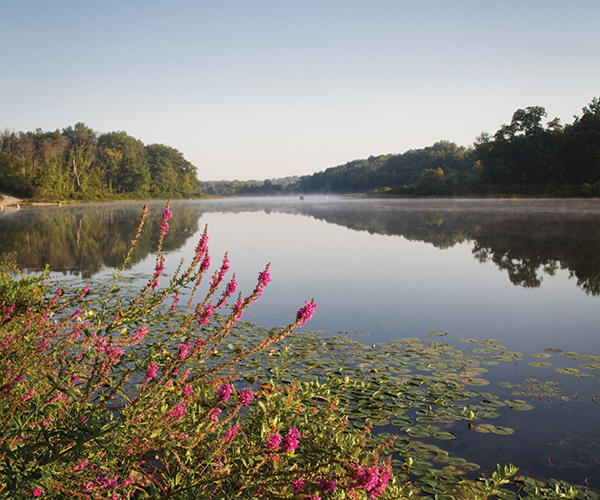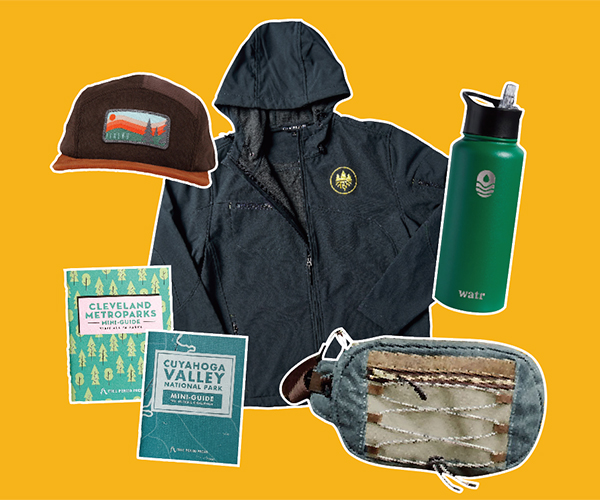Trail Guide
Jun. 23, 2014 | 4:00 AM

How To: Build a Fire
Forage: Dust off your Smokey Bear hat and clear out a spot for your fire. With a safe space, it’s time to fuel up. Avoid collecting wood from the ground — it’ll be the moistest. “The best place to get dry wood is standing deadwood,” says Tom Laskowski, director of Midwest Native Skills Institute. “That’s a dead tree that’s still standing that you can break branches off of.”
Build: Mold the smallest of your sticks — about the diameter of toothpicks — into a teepeelike shape until it’s about 6 inches tall. Make a hole at the bottom and stuff with a piece of bark to cradle your tinder. Keep adding sticks from smaller at the bottom to larger on top until you have a nice heap. “You want to make this teepee tall and skinny, not short and fat,” says Laskowski.
Ignite: Place the tinder — newspaper or dried pine needles — onto the bark inside the teepee. Now for the main event: light the tinder. As the layers whoosh into flames from bottom to top, slowly add sticks to the structure. Big logs go on last. “In about three minutes, that structure will collapse, which is fine,” says Laskowski. "You can build it to be a high school bonfire from that point if you want.”
How To: Stargaze
The Big Dipper: This mainstay of elementary school astronomy is like a place marker in the sky: It’ll help you find your way. “If you know your surroundings, [during the summer] it’ll be in the northwest part of the sky,” says Chris Mihos, chairman of the department of astronomy at Case Western Reserve University. “It’ll be high enough that you’ll be able to see the dipper, the handle of the dipper and the bowl.”
The Summer Triangle: Though not a constellation on their own, these bright stars define the summer sky if you face south. “The three stars themselves are bright, and they form a triangle almost straight up in August, but a little to the left in July,” says Mihos. “Those three stars are Vega, Deneb and Altair. They form a really pretty triangle that, if you’re lying out at night looking up, it’s impossible to miss.”
The Milky Way: Shaped like a Frisbee made of a million stars, our galaxy forms a band of light popular among stargazers, says Mihos. "If you're in a good, dark sky in the middle of summer, look up and you'll see the Milky Way arching up through the summer triangle and down to the southern part of the sky," he says. "It's just a beautiful sight."
How To: Clean a Fish
Prep: Make sure you have your equipment ready: a sharp knife, sharpening stone, cutting board, pliers and a cut-resistant glove. While wearing the glove, take the cutting board and lay the fish on its side. Insert your knife, angled away from the head, “behind the dorsal fin [behind the head] and cut down along the gill plate,” says Ron Rhodes, a professional walleye angler.
Cut: Next, insert the knife at the dorsal fin again, make a long incision along the fish’s spine. “Just let your blade slide right along its back and out through the tail,” he says. Then insert the blade, parallel to the table, through the stomach at the tail end, and carve toward the head separating the fillet from the rest of the fish. “You’re going to leave the ribs on the fish and cut right around them.”
Fillet: Flip the fish and repeat the cutting process, which will result in two fillets. Afterward, hold the tail end of the fillet with pliers and angularly insert the knife. Gently slide the knife away from the tail end, separating the skin from the meat. “Pull the fillet backward while you’re cutting forward, and the fillet will fall right off,” he says.
Eat: Rhodes recommends removing any silver-tinted meat, as it creates the fishy taste. Rinse the fish well. Butter and grill the fillets on foil seasoned with paprika, salt or lemon pepper.
Trending
-
1
-
2
-
3
-
4
-
5










